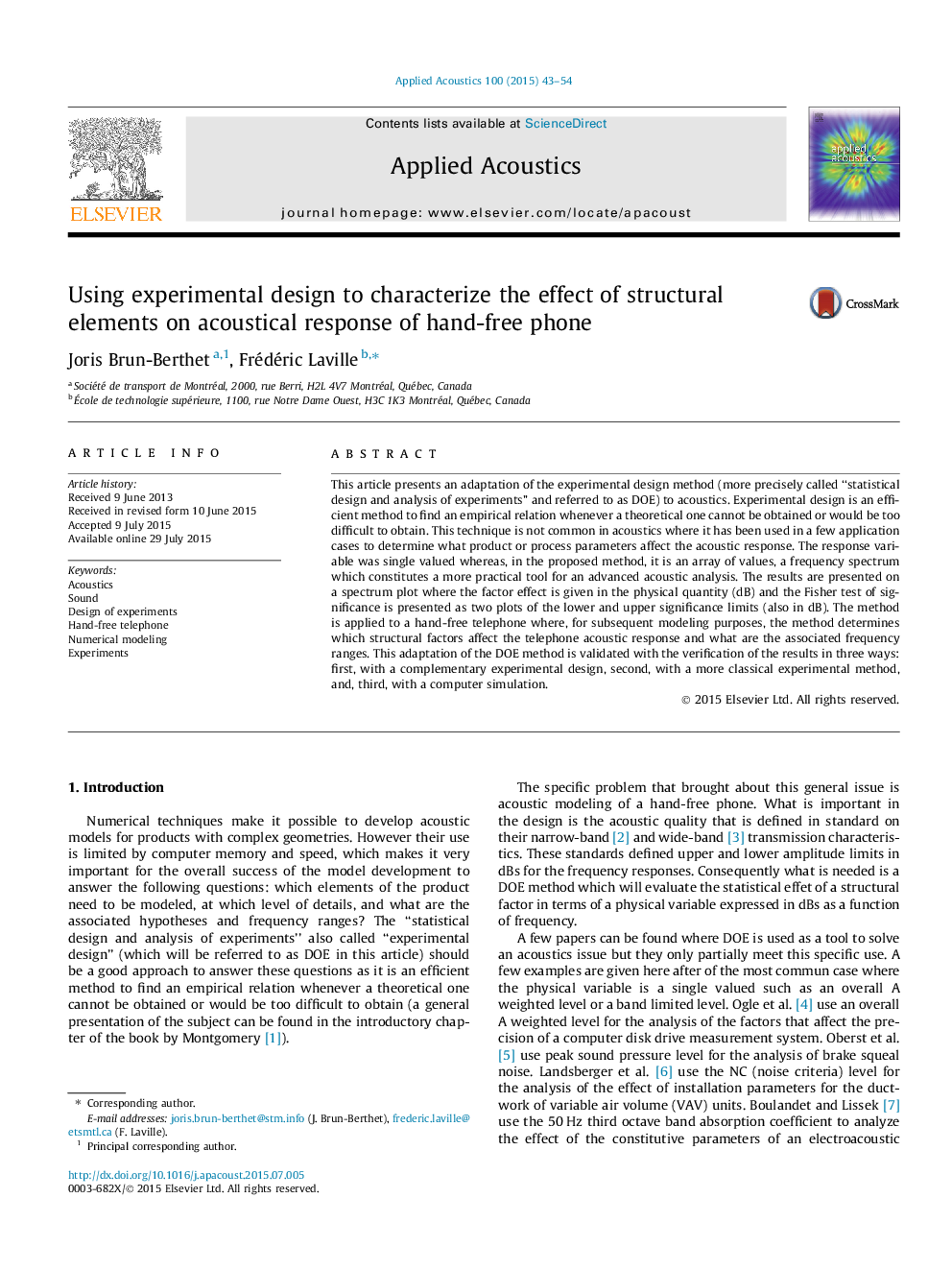| Article ID | Journal | Published Year | Pages | File Type |
|---|---|---|---|---|
| 7152647 | Applied Acoustics | 2015 | 12 Pages |
Abstract
This article presents an adaptation of the experimental design method (more precisely called “statistical design and analysis of experiments” and referred to as DOE) to acoustics. Experimental design is an efficient method to find an empirical relation whenever a theoretical one cannot be obtained or would be too difficult to obtain. This technique is not common in acoustics where it has been used in a few application cases to determine what product or process parameters affect the acoustic response. The response variable was single valued whereas, in the proposed method, it is an array of values, a frequency spectrum which constitutes a more practical tool for an advanced acoustic analysis. The results are presented on a spectrum plot where the factor effect is given in the physical quantity (dB) and the Fisher test of significance is presented as two plots of the lower and upper significance limits (also in dB). The method is applied to a hand-free telephone where, for subsequent modeling purposes, the method determines which structural factors affect the telephone acoustic response and what are the associated frequency ranges. This adaptation of the DOE method is validated with the verification of the results in three ways: first, with a complementary experimental design, second, with a more classical experimental method, and, third, with a computer simulation.
Related Topics
Physical Sciences and Engineering
Engineering
Mechanical Engineering
Authors
Joris Brun-Berthet, Frédéric Laville,
